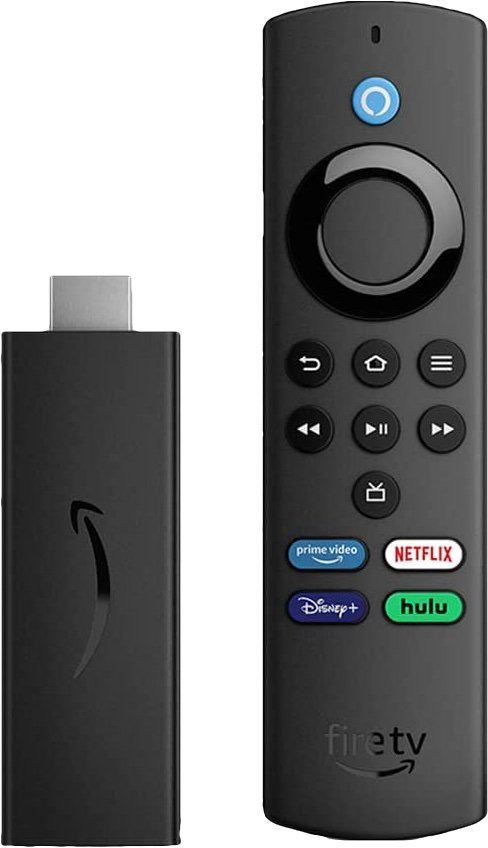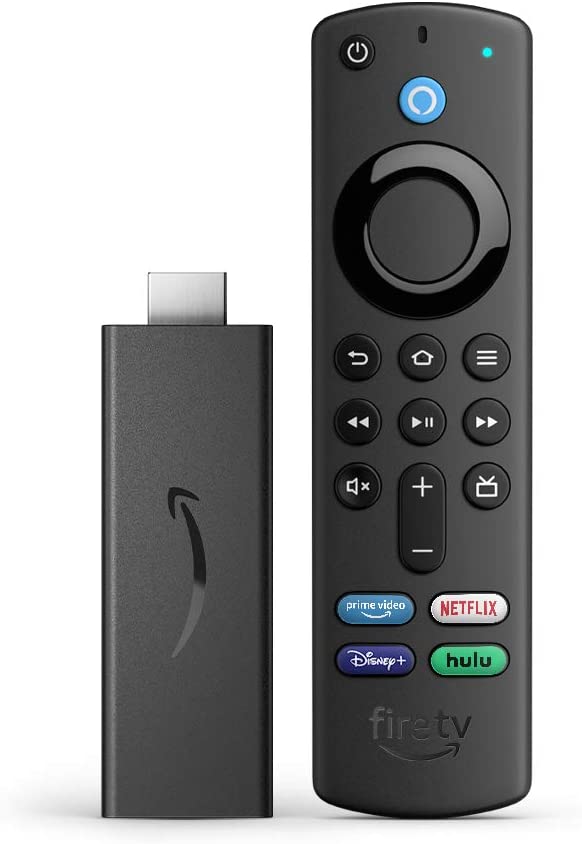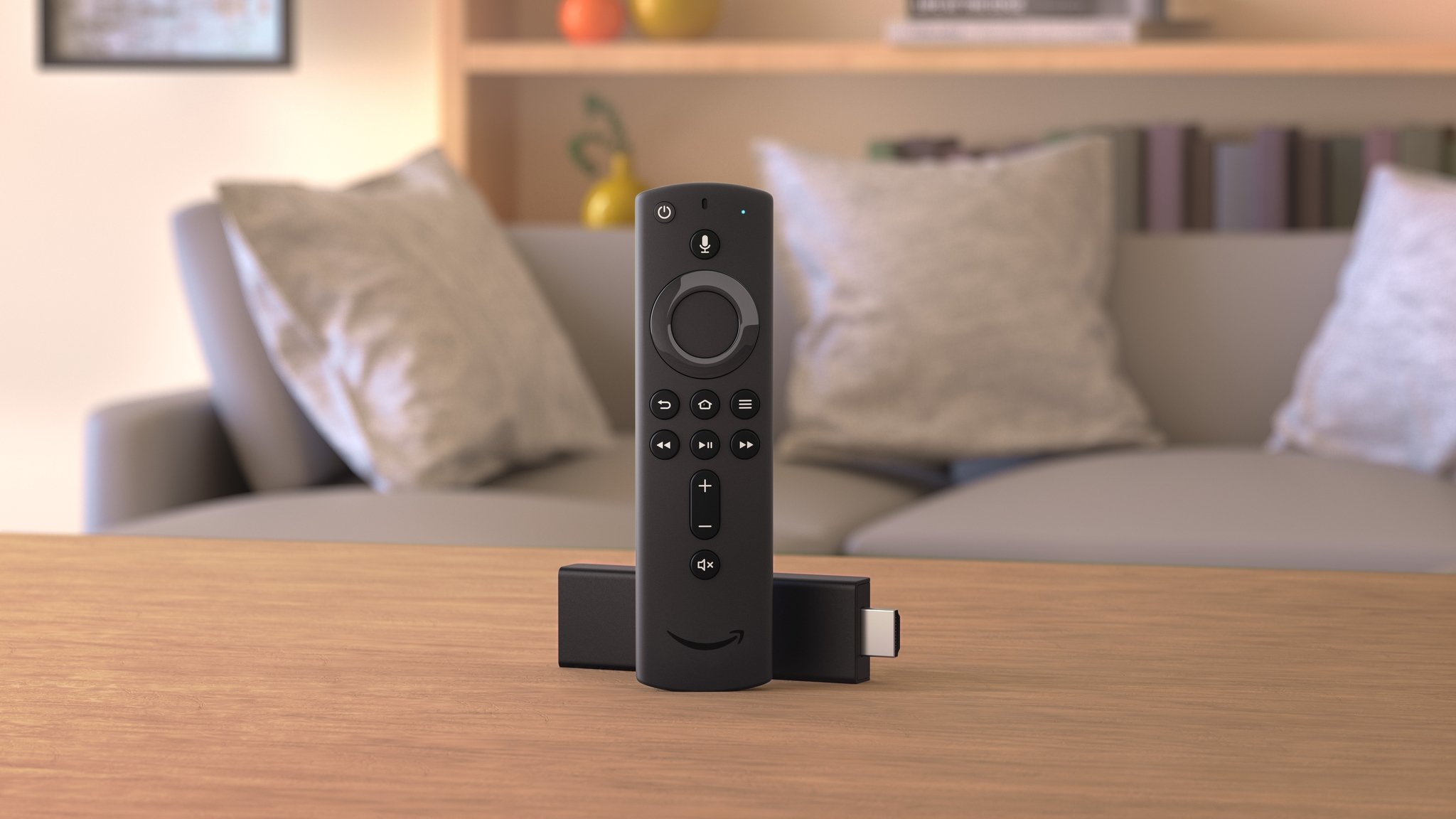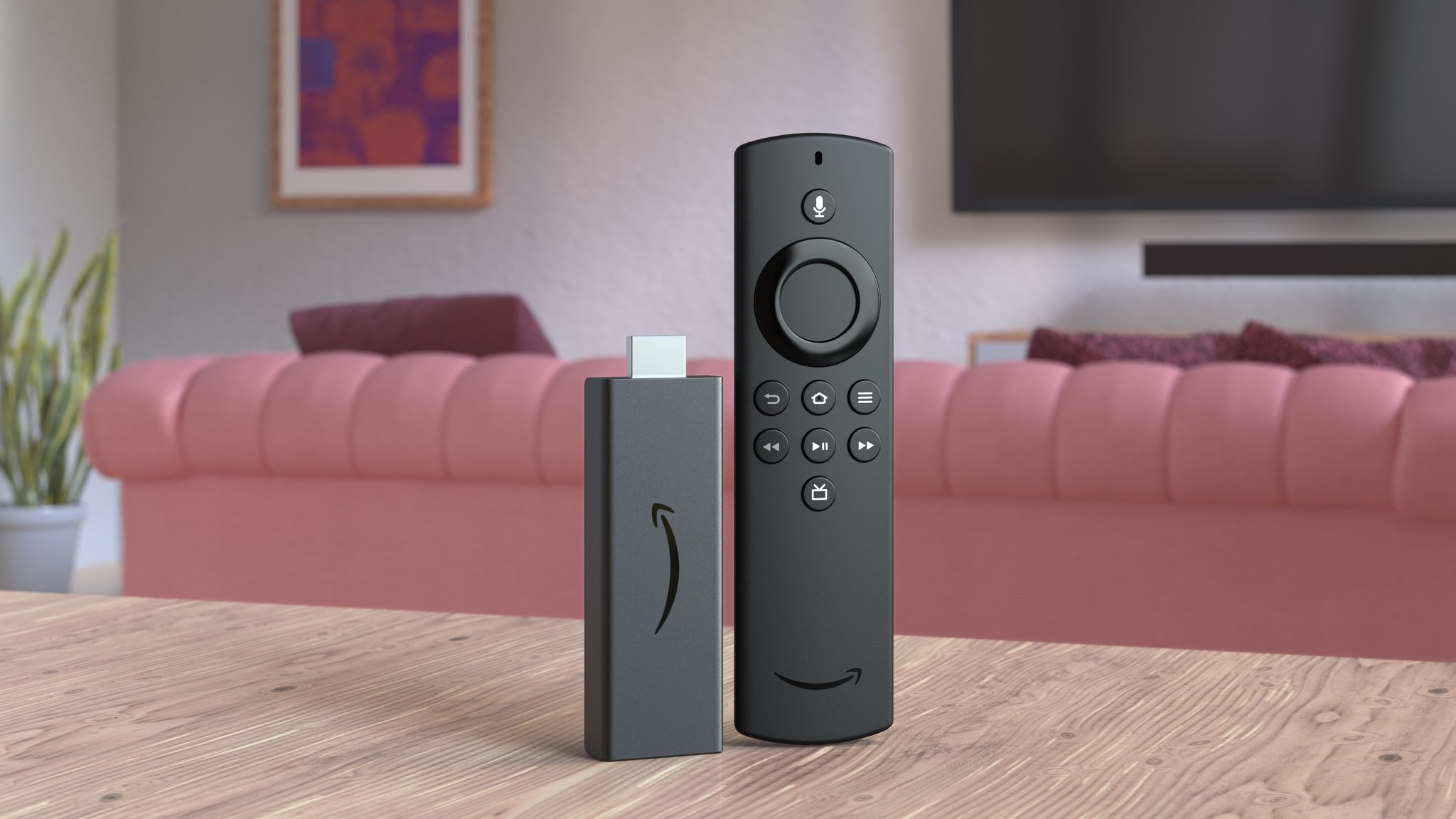Lite is just right
Amazon Fire TV Stick Lite
Pros
- Most affordable Fire TV Stick
- Comes with Alexa Voice Remote
- Certified Climate Pledge Friendly
Cons
- Doesn't support 4K, UHD, or Dolby Vision
- Dolby Atmos Audio only accessed via HDMI pass-through cable
- Remote can't control TV's basic functions
While Amazon's Fire TV Sticks have often gone on sale for this price, none have retailed for such a consumer-friendly amount. This entry-level streamer can play HD-quality video and even Dolby Atmos Audio with an HDMI cable. Plus, you get a version of the great Alexa Voice Remote.
A good Stick pick
Amazon Fire TV Stick (3rd Gen)
Pros
- 50% faster than the previous generation
- HD quality picture with Dolby Atmos Audio integration
- Full Alexa Voice Remote that can control your TV
- Certified Climate Pledge friendly
Cons
- Doesn't support 4K, UHD, or Dolby Vision
For just $10 more than the Lite, the regular Fire TV Stick gets you full Dolby Atmos Audio integration and a full Alexa Voice Remote that can control your basic TV functions like power and volume.
You almost have to do a double-take when comparing the Amazon Fire TV Stick (3rd Gen) vs. the Fire TV Stick Lite, as the devices look nearly identical. Truth be told, they aren't that different, as the spec table below illustrates. Let's dive in and see why you might prefer one of these streaming sticks over the other.
Amazon Fire TV Stick vs. Fire TV Stick Lite: Spec Comparison
The Amazon Fire TV Stick and Fire TV Stick Lite are both excellent, affordable options in the streaming space, particularly if you don't care about 4K video, or if you don't have a TV that can play UHD content.
| Amazon Fire TV Stick Lite | Amazon Fire TV Stick (3rd Gen) | |
|---|---|---|
| Dimensions | 3.4 x 1.2 x 0.5-inches | 3.4 x 1.2 x 0.5-inches |
| Picture quality | Up to 1080p Full HD with support for HDR, HDR 10, HDR10+, HLG | Up to 1080p Full HD with support for HDR, HDR 10, HDR10+, HLG |
| Audio | HDMI pass-through support for Dolby Atmos Audio | Native Dolby Atmos Audio |
| RAM | 1GB | 1GB |
| Storage | 8GB | 8GB |
| Remote | Alexa Voice Remote Lite | Alexa Voice Remote (3rd Gen) |
As you can see, there are two key areas where these Fire TV Sticks differ: audio output (sort of) and their remote controls. Let's get into that.
Amazon Fire TV Stick vs. Fire TV Stick Lite: Feature for feature
I had a hard time teasing out the differences between these two devices when I looked through the press releases and product pages on Amazon's website, so you'd be forgiven for being a little confused as well.
Both Fire TV Sticks share the same video capabilities and can display up to 1080p with support for the following formats: HDR, HDR10/10+, and HLG. Both come with 8GB of storage (which is not much if you like to download games like Jackbox Party Pack), and both share the same quad-core processor.
The only areas where they differ are in how you can output and process Dolby Atmos Audio and in the handy Alexa Voice Remotes. The Fire TV Stick Lite and Fire TV Stick are both capable of playing video with Dolby Atmos Audio, but the Fire TV Stick Lite requires an HDMI pass-through to process it.
But what most users will notice, and probably care more about, is the kind of Alexa Voice Remote each has. The Fire TV Stick comes with the full Alexa Voice Remote with buttons to control the power and volume on your TV, whereas the Fire TV Stick Lite does not. The Lite version of the Alexa Voice Remote can control the user interface of the Fire TV experience, and there is push-button voice access to Alexa, but there is no means to control your TV.
Amazon Fire TV Stick vs. Fire TV Stick Lite: Which should you buy?
These two devices are very similar and are only separated by $10. I know that I offered more cons for the Fire TV Stick Lite, but it would still be my top recommendation here for a couple of reasons. For starters, while the TV controls in the full Alexa Voice Remote are nice to have, they're not essential. And this may be a big assumption, but I'm betting that if you can't play Dolby video, you probably don't care about Dolby Atmos Audio (and certainly wouldn't be too put off to use HDMI pass-through to enable it).
The Fire TV Stick (3rd Gen) is a fantastic device, but if you're going to upgrade, I think it's worth paying the extra $10 to get the Fire TV Stick 4K. And if you really want the best Amazon Fire TV Stick, then you'll want to spring for the all-new Fire TV Stick 4K Max. The only downside is that you'll end up spending an extra $25 for the latest and greatest Fire TV Stick.
Lite is just right
Amazon Fire TV Stick Lite - Streaming Media Player
No frills
$30 at Amazon $30 at Best Buy $30 at B&H Photo
Amazon's newest HDMI dongle is its cheapest Fire TV stick ever. At $30, the Fire TV Stick Lite dispenses with the additional TV controls of its mainline counterpart, but it still gets the job done.
Good Stick pick
Amazon Fire TV Stick (3rd Gen)
Middle child
$40 at Amazon $40 at Dell $40 at Best Buy
Amazon's updated Fire TV stick is still a fast streaming stick and comes with an updated remote for easier access to TV controls. It still only does 1080p, though.
Source: androidcentral



